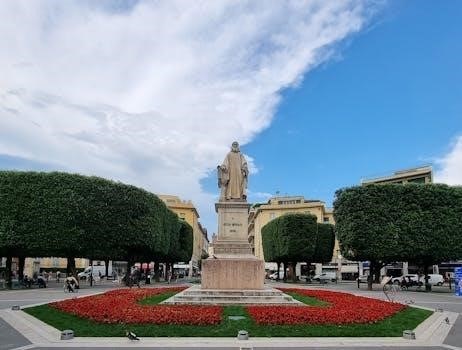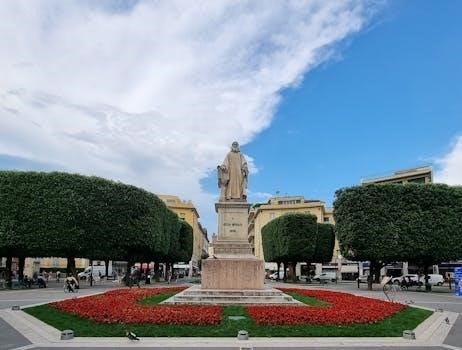
Guido Galletti⁚ An Overview
Guido Galletti was an Italian artist, born in 1893, known primarily for his sculptural work․ His artistic career spanned several decades, leaving a notable mark on Italian sculpture․ Galletti’s creations have been offered at auctions multiple times․
Early Life and Birth
Guido Galletti’s early life began in London, where he was born on March 22, 1893․ Although he was born in the United Kingdom, he was of Italian nationality․ Details about his childhood and upbringing remain relatively scarce․ However, it is known that he eventually moved to Italy, where he would spend the majority of his life and artistic career․ The specific circumstances surrounding his family and early education are not widely documented․ However, it is evident that he developed an interest in the arts early in life․ This passion would lead him to pursue a career as a sculptor․ His move from London to Italy was a pivotal moment in his life, setting the stage for his future artistic endeavors․ Despite the lack of detail surrounding his early years, the influence of his Italian heritage is apparent in his artistic style and subject matter․ This period laid the foundations for his subsequent success as a notable Italian sculptor․ Galletti’s early life is a subject that holds further potential for research and historical documentation․
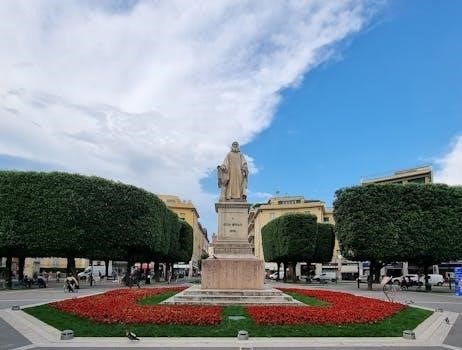
Guido Galletti⁚ Sculptural Work
Guido Galletti was a renowned Italian sculptor, famous for his unique and captivating pieces․ His works have been featured in various locations, including underwater settings․ He is best known for his statue, “Christ of the Abyss”․
Christ of the Abyss
The “Christ of the Abyss,” or “Il Cristo degli Abissi” in Italian, stands as one of Guido Galletti’s most celebrated creations․ This submerged bronze statue of Jesus Christ is an iconic symbol, with the original cast placed in the Mediterranean Sea․ Specifically, it is located off the coast of San Fruttuoso, between the picturesque towns of Camogli and Portofino on the Italian Riviera․ The statue is a powerful representation of peace and protection for those at sea․ The placement of the statue underwater adds a unique element to its artistic impact, making it a place of pilgrimage for divers and visitors alike․ Cast in 1954, the original is not the only version, as there are replicas in other locations․ Galletti’s work captures a serene and spiritual essence, further enhancing its significance․ The “Christ of the Abyss” is more than just a statue, it embodies a message of hope and resilience․ It is a testament to Galletti’s artistic skill and his ability to create works that resonate with viewers on multiple levels․
Other Sculptures
While the “Christ of the Abyss” remains Guido Galletti’s most famous work, his artistic portfolio extends beyond this iconic statue․ Galletti’s other sculptures, though perhaps not as widely known, are a testament to his versatility and skill as a sculptor․ Unfortunately, detailed information about many of these other pieces is not as readily available․ However, his works, in general, demonstrate a deep understanding of form and a keen eye for detail․ It is known that his sculptures were often offered at auction, suggesting a level of appreciation and value in the art market․ Research into these works reveals that they are made from various materials and depict a range of subjects, reflecting his diverse artistic interests․ Although specific titles or locations of these works are not extensively documented, their presence at auctions indicates a continued interest in his oeuvre․ Further research into art databases and auction records may reveal additional details about these lesser-known sculptures, providing a more complete picture of Galletti’s contributions to the world of art․ His legacy as a sculptor is not just confined to the underwater Christ; it also includes the variety of his other pieces that are slowly being discovered and appreciated․
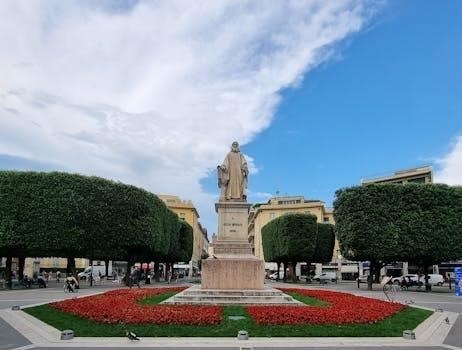
Guido Galletti⁚ Acting Career
Guido Galletti is known for his acting role in the controversial film “Salò, or the 120 Days of Sodom”․ This marks his primary, and perhaps only, foray into acting․
Salò, or the 120 Days of Sodom
Guido Galletti’s involvement in Pier Paolo Pasolini’s “Salò, or the 120 Days of Sodom” is a significant, albeit controversial, aspect of his career․ He appeared in the film, which is known for its graphic and disturbing content, based on the novel by the Marquis de Sade․ Galletti portrayed a character associated with the dark themes explored in the movie, contributing to its unsettling atmosphere․ The film, set during the time of the fascist regime, depicts a group of wealthy and powerful individuals who subject a group of young people to brutal torture, both physical and psychological․ Galletti’s presence as an actor in this movie is notable, as it showcases a departure from his primarily known work as a sculptor․ The film remains a subject of much debate and discussion, and Galletti’s role within it has contributed to his recognition, at least partially, in the world of cinema, despite not being his primary profession or area of expertise․ His participation in this movie remains a unique and dark element in his overall career․
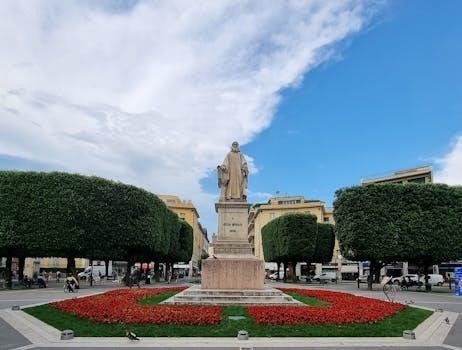
Guido Galletti⁚ Biographical Details
Guido Galletti was born in London on March 22, 1893, and passed away in Genoa on March 24, 1977․ He was an Italian sculptor whose life and work have left a lasting impact on Italian art․
Birth and Death Dates
Guido Galletti’s life began on March 22, 1893, in the city of London, marking the start of what would become a notable career in art and sculpture․ His birth in London provides an interesting detail about his early life and possibly hints at early influences that might have shaped his artistic direction․ The specific date of his birth, March 22nd, is a key piece of biographical information that helps us place him within the historical context of his time․ Galletti’s journey ended on March 24, 1977, when he passed away in Genoa, Italy․ This date marks the conclusion of his life and career, a period during which he produced various artworks, including the well-known “Christ of the Abyss․” His death in Genoa, a significant Italian port city, further establishes his strong connection with Italy, where most of his work was created and where he is remembered as an accomplished sculptor․ These dates provide an essential framework for understanding his life and the timeline of his artistic development․
Nationality and Profession
Guido Galletti was an Italian artist, recognized predominantly for his contributions to the world of sculpture․ Although born in London, his artistic identity and career were deeply rooted in Italy, making him a significant figure in Italian art history․ He is primarily known for being a sculptor, demonstrating skill and creativity in three-dimensional art forms; His profession as a sculptor allowed him to express his ideas and feelings through the medium of solid material, resulting in works that have garnered both national and international attention․ Galletti’s commitment to sculpture led him to create pieces that are both technically accomplished and artistically meaningful․ The fact that he is repeatedly described as an Italian artist underscores the nation’s influence on his style and themes․ His work reflects the cultural and historical context of Italy, further solidifying his place within the Italian artistic tradition․ While he explored other avenues, such as acting, his main career path and passion was always centered on sculpture․
Guido Galletti⁚ Additional Information
Guido Galletti’s artworks have appeared in art auctions, demonstrating continued interest in his creations․ He also had some presence on social media platforms like Facebook, connecting with people․ His legacy is found in his art and influence․
Art Market Presence
Guido Galletti’s works have consistently appeared in the art market, indicating a sustained interest in his artistic contributions․ His sculptures, paintings, and other creations have been offered at auction multiple times, with realized prices varying across different sales․ These auctions provide a platform for collectors and art enthusiasts to acquire pieces by Galletti, reflecting his enduring appeal․ The presence of his work in the art market suggests a recognition of his significance in Italian art history․ The prices his works fetch at auction also point to his perceived value within the art world․ Furthermore, these sales provide an insight into the appreciation and demand for his unique artistic perspective․ Through the art market, his legacy continues to engage and influence art collectors․ The repeated appearance of his works at auction is a clear demonstration of his continued appeal․ Many collectors value the opportunity to add a piece of his work to their collections․ The prices reflect the recognition of his contributions as an artist․
Facebook and Social Media
Guido Galletti’s presence on Facebook highlights the accessibility of his life and work in the modern digital landscape․ There are profiles associated with his name, offering a space for individuals to connect and share their interest in him․ This presence on social media serves as a platform for discussions, information sharing, and engagement with his artistic legacy․ Through Facebook, people can easily find and connect with other individuals who also have an interest in Galletti’s life and works․ The platform facilitates the sharing of photos, videos, and other media related to his work․ It provides a convenient tool for the art community to stay informed about his biography and artistic achievements․ Social media, including Facebook, helps make his life and work accessible to a broader audience․ It provides a space for fans and scholars to share information, engage in discussions, and connect with those who share their interest in Guido Galletti․ Through social media, his artistic contributions and legacy are kept alive and continue to inspire․ It allows fans to come together and discuss their passion for his life and work, ensuring his legacy continues to be enjoyed by future generations․
